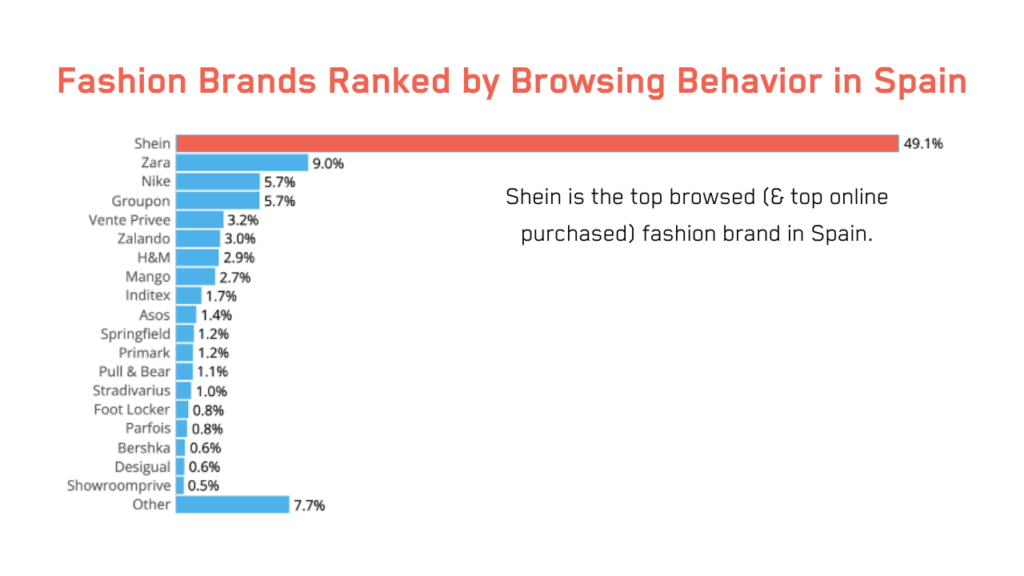
Can Telcos beat the FANG companies at their own game?
The current situation with millions of people confined to home and eschewing physical meetings has highlighted the way that social media has captured our imagination.

Digitization has been a key trend for several years, but in recent times the pace of growth in this area has boomed. One major reason for this has been the impact of COVID-19 and the effect this had on the way we shop, work, communicate and engage with each other.
In the US, for example, ecommerce sales grew by 50 percent during the pandemic. However, this is a global trend. Consumers in Spain are also increasingly getting on board with digitization – boosted by one of Europe’s best-connected broadband networks – so it’s vital brands in the country are able to respond and give consumers what they have come to expect.
As the pandemic heads into the rear view mirror, it’s clear that it has left an impact on how we live our lives. In fact, an increased reliance on digital services is set to be one of the major legacies of recent events. For businesses, those that have been able to adapt to the changing consumer landscape have thrived, while those that were slow to respond have struggled. This is not likely to change any time soon, so those who are at risk of falling behind must act now to tap into this more digital world.
Digital channels are about much more than online shopping. Entertainment, healthcare, education and work have all been transformed by improved access to online services. Whether it’s watching the latest film releases from the comfort of your own sofa or being able to connect with a doctor without leaving the house, increased reliance on digital offerings is clear to see. For instance:
All this means that consumers are more comfortable than ever being online and will be unlikely to give up the added convenience and ease of use digital services offer.
Like those in many other European countries, Spanish consumers have been quick to embrace digital options in the post-COVID world, with citizens benefiting from strong digital infrastructure for fixed and mobile connectivity. For example, in 2023, a European Commission report noted Spain is “one of the EU’s best performers in digital infrastructure”, with 91 percent of the country having access to full fiber internet.
This offers consumers great opportunities to increase their online activities and is set to continue in the coming years. According to Statista, there are 33.82 million ecommerce users in Spain in 2023 – up from 27.25 million in 2019. However, this figure is expected to hit 40 million by 2027. Revenue from ecommerce is also forecast to grow by 45.58 percent between 2017 and 2027.
If you need more proof of the growth of digitization in Spain, consider these figures for 2023 from the Internet Advertising Bureau:
These increasingly digitized consumers present major opportunities for brands – if they have the right solutions in place to take advantage of it. The accelerating shift to online channels offers the ability to gather data about their customers and, in turn, offer more tailored, personalized products and services that enhance the customer experience. However, those who maintain a strong focus on physical experiences and do not make the most of digital insights to adapt to evolving consumer demands will quickly become uncompetitive.
In retail, for example, many shoppers have changed their habits permanently post-Covid, so brands can either adjust to this or risk going out of business. There is no better example in Spain than that of the Chinese-owned fast fashion company Shein, which now ranks as the number one fashion brand by online browsing in Spain and number three in total market share (Data: Intent HQ Market Explorer).

One way to take advantage of consumers’ increased digital presence is to tap into the wealth of authentic behavioral data this creates. This means that instead of relying on traditional market data – which can often be expensive to obtain, superficial and unreliable – brands can make decisions based on real insight into what their customers are actually doing.
In Spain, Intent HQ’s Market Explorer offers access to billions of real-world data points, with over 11 million consumer records covering demographics, behaviors and attitudes. With new data every quarter, this provides brands with an in-depth, up-to-date picture of the market.
By using these advanced data analytics solutions to tap into these online activities and gain consumer insight, brands will be able to better guide their own product offerings and digital transformations to keep up with trends and meet customers where they are online, whether this is on social media, ecommerce or in a hybrid manner that uses online information to enhance in-person customer service.
There are many strategies businesses in Spain can pursue in order to take advantage of more digitized customers. In addition to direct online sales and building up mobile apps, some key areas organizations should consider in order to meet customer needs include:
Customer success requires the use of accurate, up-to-date information in order to provide actionable insight, and this is exactly what is now available to businesses as consumers spend more time engaging with brands online. But in order to make customer analytics effective, you need the right tools to turn data into insight.
Customer Analytics platforms add value throughout the customer lifecycle. Some of the key areas where customer behavior analytics can be applied include:
Digital channels offer a wide range of data that can be used to gain in-depth customer insight. This includes transactional data such as purchase history, demographics information that allows you to compare the preferences of similar individuals and develop more accurate buyer persona outlines, and – perhaps most importantly – behavioral data that provides clear insight into how your target audiences act both online and off.
Brands do not always have this data to hand, or they have critical gaps in their data that block them creating such customer insights. This is where the Intent HQ Insights Store can solve the issue. This offers access to consumer and market insights based on the transaction and behavioral data points of millions of real consumers. Armed with this, brands can finally move their customer strategies forward from where they have possibly stagnated in recent years.
These new sources of insight now available from Intent HQ in Spain can be joined together with a client’s existing customer data. Using Customer Analytics platforms like Intent Lift, you can incorporate new sources of insights with the consensual data you already own such as:
While the data you generate directly from your own customers will be especially valuable, you shouldn’t overlook information from third-party sources. When combined with your own unique insights, this can provide vital context into the digital activities of consumers, answering key questions about why, how and when they can be expected to take certain actions.
Digital data can provide recommendations and suggestions on a number of areas in order to ensure the customer experience you’re offering is personalized to each user. This isn’t just about offering them what they want – it’s about optimizing the moments of engagement. The right offer at the wrong time is as useless as an offer that’s completely irrelevant. By analyzing consumers’ digital activity closely with tools such as Intent Lift, businesses can create highly tailored offerings in areas such as:
As well as providing a better digital customer experience to existing customers, the insight gained from big data analytics can also help ensure your business keeps up with changes in behavior and interests as more customers turn to online services. Data has a major role to play in research and development of future products and services by telling organizations exactly how customer demands and expectations are shifting and what you can do to take advantage of them. It does this by accessing real-world behavioral data that can expedite understanding of emerging trends and give brands that first-mover advantage.
In Spain, the trend towards greater digital service usage is clear. With ecommerce sales growing rapidly and consumers increasingly turning to digital channels to research and purchase products and services, brands that are not utilizing this digital data exhaust will miss out. With predictive analytics tools based on real customer behavior, however, businesses will be able to spot emerging trends before they become obvious.
This can help them get a headstart on lengthy development cycles while still having confidence they are going down the right path. This means they will not have to shift course and waste time and money if circumstances change. Utilizing the insights from Intent HQ’s Insight Store, it is possible to spot emerging trends from your competitors’ sales or identify month-on-month growth in consumer product spending from quarterly data updates.
While effective digital transformation starts with the right market insights, the possibilities for putting this into action are almost endless. But in order to do this, companies must understand the trends and customer behavior within their specific vertical or territory.
The priorities for retailers may well be different than those for professional services, for example, but the principles are the same. It is all about understanding customer spending and behavior patterns and applying them to each business’s unique circumstances and market position in order to move forward and monetize these opportunities. So what does this all mean in practice?
Developing a deeper understanding of your audience’s interests can help boost marketing campaigns by ensuring your audiences are appropriately segmented, you have the right products, and optimized communications. It also helps you team up with the right partners in order to promote your company and reach a new audience or penetrate key segments in more depth. This isn’t just about working with like-minded brands either – it also means connecting with the right individuals on platforms like social media.
More than half of people in Spain (51 percent) follow influencers online, with Instagram and YouTube the most popular platforms for this. Brands can look to take advantage by using insights from a customer analytics tool such as Market Explorer to understand the specific interests and affinities of different segments of their target audience. This can then be used to identify the best influencers to align a marketing strategy with for each customer segmentation category.
Dealing with the volume of big data this digital environment generates will be a major challenge – one that even the best-resourced companies will struggle with. This is why it will be essential for any digital efforts to embrace artificial intelligence (AI) and machine learning (ML) as part of any business analytics solution.
These tools help automate tasks throughout the process, from data collection to final conclusions. This not only saves a huge amount of time but democratizes access to insights. With AI and ML to assist in the process, analytics are no longer solely the realm of data science teams but can be used by all teams to make connections that would otherwise be hard to spot and drive better customer engagement.
Ultimately, the accelerated rise of the digitized consumer means businesses of all sizes will have to react quickly to evolving trends to avoid getting left behind by more agile competitors. Therefore, it’s essential that the tools used to monitor user behavior need to deliver fast results and the wider business also needs the agility to put this customer analysis into practice. The ability to tap into huge sources of data ensures that predictive analytics are as accurate as possible and can give businesses a step up over their competitors when it comes to spotting emerging consumer trends and opportunities.
This means that businesses will be able to meet customers at the right time, via their preferred digital channels, with the most relevant message. Businesses that want to succeed in the Spanish market must invest in digital channels to create seamless experiences for their customers, and this starts with market insights.
With solutions like Market Explorer, Intent Lift and Intent Edge, companies can understand trends and customer behavior in their specific sectors, before applying these insights to future marketing campaigns or product development plans and then engaging with the customer in an optimal manner.
To learn more about any of the Intent HQ products, book a consultation today.